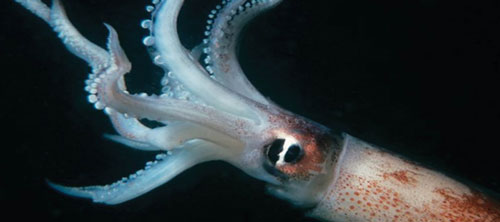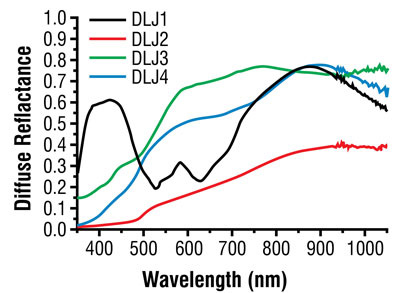| Posted: Jan 30, 2015 | |
Nanotechnology and nanomaterials for camouflage and stealth applications (page 4 of 5) |
|
| Stealth Coatings | |
| Scientists at the University of California, Irvine have created a new stealth coating that can change the way it reflects infrared light on command5. The films, which are around 100,000 times thinner than a human hair, can be switched on and off using a chemical signal. The films were created by combining reflectin and graphene. Tests conducted have shown that an orange surface can be made to blend into green foliage when the coating is activated. The technology mimics the active camouflage used by squid, where they change the colour and even the texture of their skin to blend into the background, Fig. 3. | |
 |
|
| Fig. 3: Chromogenic squid skin.5 | |
| These new coatings can be attached to a wide range of surfaces and are the first step towards developing 'shape shifting clothing' capable of adapting to the environment around it. Some attributes of these coatings include: | |
|
|
|
| In another example, an Israeli company, Nanoflight has claimed to develop a new nano paint, which can make it near impossible to detect objects painted with the material. The company is continuing their efforts to extend the camouflage action of these paints in infrared region as well. BASF, Germany (uses polyisocynate dendrimer nanoparticles) and Isotronic Corporation, USA are among the very few agencies coming up with chemical agent resistant and innovative camouflage (CARC) coatings using nanomaterials. In India, paints developed by Defence Laboratory, Jodhpur (DLJ) using polymeric nanocomposites, nanometals and nanometal complexes are perhaps the first examples of multispectral camouflage paints tested in VIS-NIR and thermal infrared regions of the electromagnetic spectrum at system level. The nanocomposites developed by DLJ provide excellent scope for the tuning of reflectance properties both in visible and near infrared region6 of electromagnetic spectrum leading to their applications on military targets (Fig. 4). | |
 |
|
| Fig. 4: Diffuse reflectance spectra of nanocomposites developed at Defence Laboratory, Jodhpur. | |
| Intensive research efforts are being made by DRDO to develop and introduce functional nanomaterials/ nanocomposites in radar (microwave) absorbing coatings and structures of land based, aerospace and naval vessels to make them stealthy, light in weight (fuel efficient), stronger, etc. | |
| A number of magnetic and dielectric nanometals, metal oxides, carbon nanomaterials (carbon nanotubes, graphene, etc) in free or composite forms are reported to show promising results in terms of reducing the radar cross section6,7. | |
| Recently, researchers from South Korea have reported the fabrication of radar absorbing structure consisting of a composite graphene/ Kevlar/ epoxy. The composite containing 9% graphene is demonstrated to show reflection loss >10dB in the frequency range of 12-18 GHz at a thickness of 2.5 mm8. | |
| Smart Materials and Textiles for Adaptive Camouflage (Soldier?s Uniform) | |
| The requirements for soldier camouflage in the context of modern warfare are becoming more complex and challenging given the emergence of novel infrared sensors. There is a pressing need for the development of adaptive fabrics. | |
| Some of the applications of multifunctional materials are of interest for the soldiers like: lightweight, enhanced stealth and ballistic protection, biological/chemical resistance, communication, energy storage properties, durability and comfort of soldier equipments and uniforms9. | |
| The payoffs of developing these technologies include significant reductions in fatigue, casualties and detection, and improved environmental protection. Advanced armor materials must enhance protection and increase survivability of the soldiers. Variety of factors should be considered when engineering armors such as penetration resistance, weight, bulk, deflection, multi-hit capability, flexibility, comfort and field durability. | |
| Different sensors on the modern battlescape "see" and detect objects and soldiers in different ways. The creation of multispectral simultaneous adaptive camouflage takes this into account. Recently, a novel stealth camouflage technology named 'Modern Warfare Camo™' was reported10, which combines high-definition video imagery, a flexible thin-film display, multiple layers of sensor-blocking nanomaterials, and miniaturized thermoelectric array devices. Together, these countermeasures mimic the location and environment, producing mutispectral simultaneous adaptive concealment. | |
| Continue to next page (5 of 5) | |
|
Become a Spotlight guest author! Join our large and growing group of guest contributors. Have you just published a scientific paper or have other exciting developments to share with the nanotechnology community? Here is how to publish on nanowerk.com. |
|
